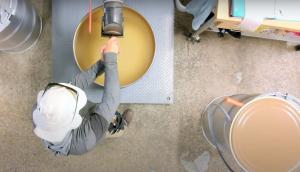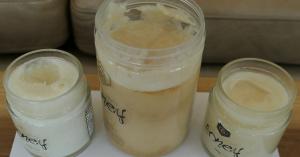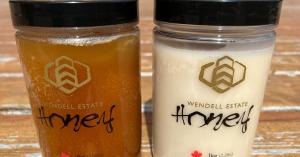Raw Honey Freshness, Flavor, and Health Properties Deteriorate with Aging in Ambient Temperature Storage

Honey is fresh when the producer fills the bulk drum, but won't be fresh months later at ambient storage
Raw honey that’s been sitting in a warehouse in the bulk drum, on the store shelf, or in the kitchen cupboard for months is anything but fresh.
So very untrue.
The folk wisdom quoted all over the internet of honey being perfectly edible after over 3000 years appears to date back to a 1913 article in National Geographic magazine and then affirmed by the Smithsonian Magazine in 2013. Peter Borst writes in the American Bee Journal that examination of a pyramid sample of “honey” by a chemist in 1926 “found the jars to be practically empty, save for a trace of dried material stuck to the inside. Tests on the material were unable to determine the nature of the substance, other than it was not completely soluble in water, which honey would be.” In the one sample that has good evidence of being honeycomb (stored since 1350 BC), the honey is described as being reduced to a “dark brown mass”. While consuming this likely ancient honeycomb may not be toxic, it hardly sounds appetizing.
The problem is that almost everybody, including, it seems, many raw honey brands and retailers, believe that honey will stay fresh indefinitely in a warehouse, on a store shelf, or in a kitchen cupboard. While honey is an exceptionally stable and well-preserved food naturally, it does lose its freshness over time in ambient storage. Organic compounds tend to denature over time, usually in a manner that is highly temperature dependent. The higher the temperature, the more rapidly organic compounds denature. This means that the polyphenols, flavinoids and bee enzymes that give raw honey both its unique flavor and its health benefits are slowly degrading as the raw honey languishes in ambient temperature storage. At normal room temperature, the process is relatively slow, with measurable changes occurring over weeks to months.
Note that this entire discussion is specifically about raw honey. The concept of “freshness” cannot be applied to pasteurized honey. Processed honey has had any “freshness” intentionally cooked out of it to prolong shelf life, prevent crystallization, and make it more "visually appealing". Pasteurized honey doesn’t deteriorate on the store shelf like raw honey because it was fully deteriorated before reaching the shelf.
It’s worth noting that most store-shelf raw honey has been purchased in bulk from producers, which means that the honey has often been sitting in a bulk drum in a warehouse for weeks, to months or even years, aging away, before being packaged into a retail jar (a process that usually requires heating the honey). Many raw honeys then get stamped with a 2 to 5-year "best before" date, sitting around in ambient-temperature warehouses and then on store shelves for months to years. By the time the customer opens their new jar of raw honey home, it has usually deteriorated considerably.
To be clear, stale raw honey is in no way harmful or hazardous. It’s just not fresh. It has lost some of its original complex flavor and some of the organic compounds that confer health benefits. This has been well researched and laboratory tests can quantify honey freshness. According to Dr. James Gawenis, the Chief Chemist at Sweetwater Science Labs, “The single best indicator of honey freshness is HMF (5-hydroxymethylfurfural) content. I would add a second test, diastase activity, to determine whether an elevated HMF is due to intentionally heating the honey, or to honey that has been stored for longer times at ambient temperatures.” The maximum HMF content for honey to be considered “raw” is 15mg/kg (for non-tropical honey). The lower the HMF content, the fresher the honey is.
Interestingly, unprocessed honey has a built-in freshness indicator: the color. As raw honey ages, the color darkens. This is not to say that darker honey is necessarily less fresh than lighter honey. Honeys start out in different shades depending on the floral source, but honey that is darker than it used to be is less fresh than it used to be. Those that keep raw honey in their homes can observe the aging directly, and even pay attention to whether they can notice flavor change as the color darkens.
The only way to slow the aging of honey is to lower the temperature. The cooler the temperature, the longer the honey stays fresh. The issue with this is that most retail honey is liquid. Almost all raw liquid honeys gradually crystallize over time, slowly turning into a solid mass. Honey crystallization is also temperature dependent: The cooler the temperature, the more rapidly the honey tends to crystallize. For liquid honey, keeping it fresh versus keeping it liquid are at odds with each other. Soft-set honey (also known as creamed, or whipped honey) doesn’t have this issue as it has already crystallized (in a controlled fashion) before being offered for sale.
Putting things in perspective, at most ambient temperatures, meaningful changes in honey properties occur over months. There’s no need for raw honey consumers to keep the jar of honey that they're using in the fridge. What is relevant is that unnecessary aging of raw honey could be minimized by proper storage prior to retail sale, or at home prior to opening the jar. People that buy honey in quantities of several jars at a time (perhaps at a farmers’ market during harvest season), may want to consider the best storage to preserve the freshness, flavor, and healthiness of their raw honey. Retailers of soft-set raw honey should consider keeping back-room stock in cold storage to prevent unnecessary aging, or, ideally retailing it from a refrigerated display, like they do for butter and milk products. This would show a true commitment to the quality of the honey they sell.
Jeremy Wendell
Wendell Estate Honey
204-564-2599
email us here
Visit us on social media:
Facebook
Instagram
YouTube
TikTok
Fresh honey from beehive to jar
Legal Disclaimer:
EIN Presswire provides this news content "as is" without warranty of any kind. We do not accept any responsibility or liability for the accuracy, content, images, videos, licenses, completeness, legality, or reliability of the information contained in this article. If you have any complaints or copyright issues related to this article, kindly contact the author above.


